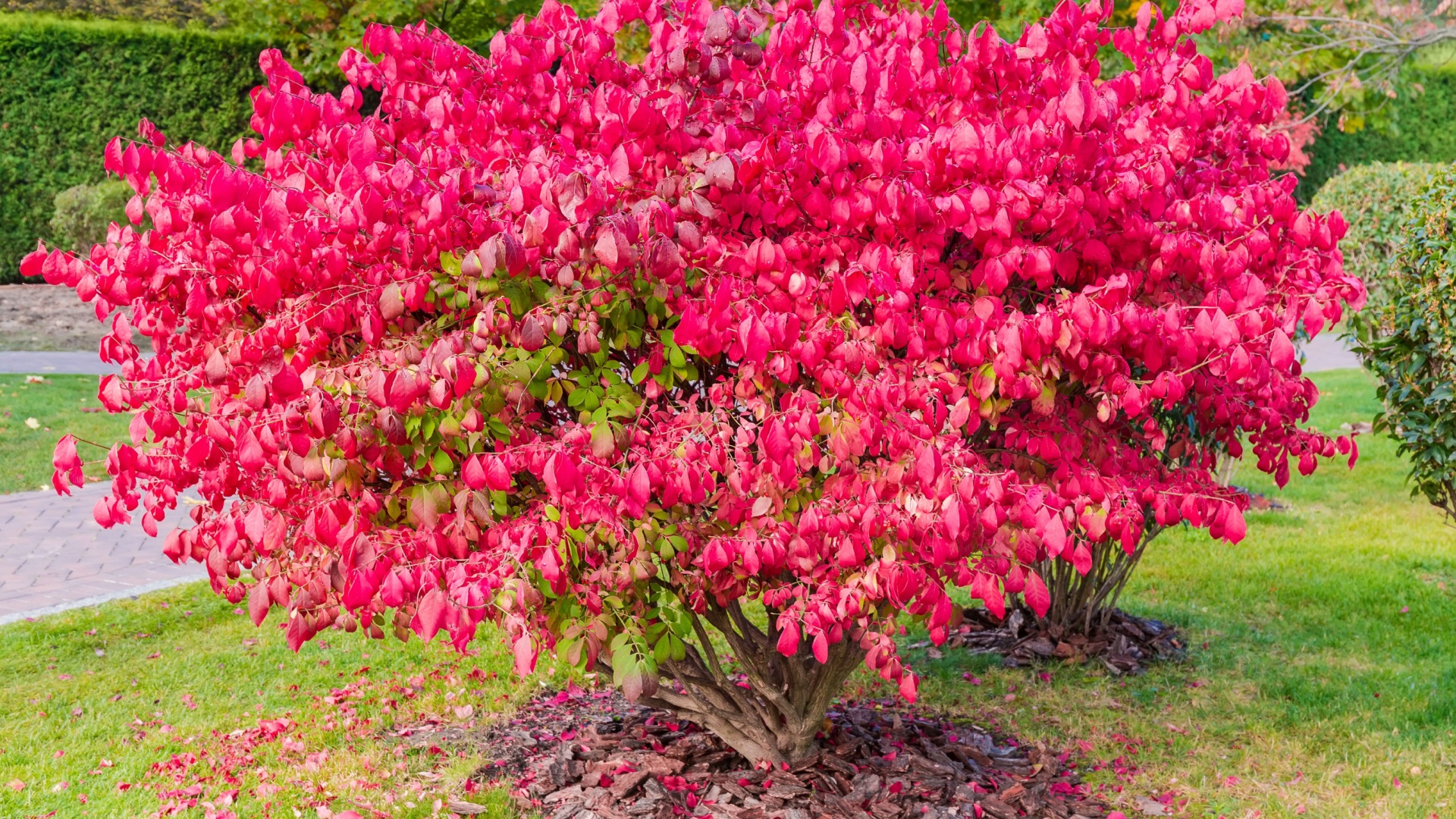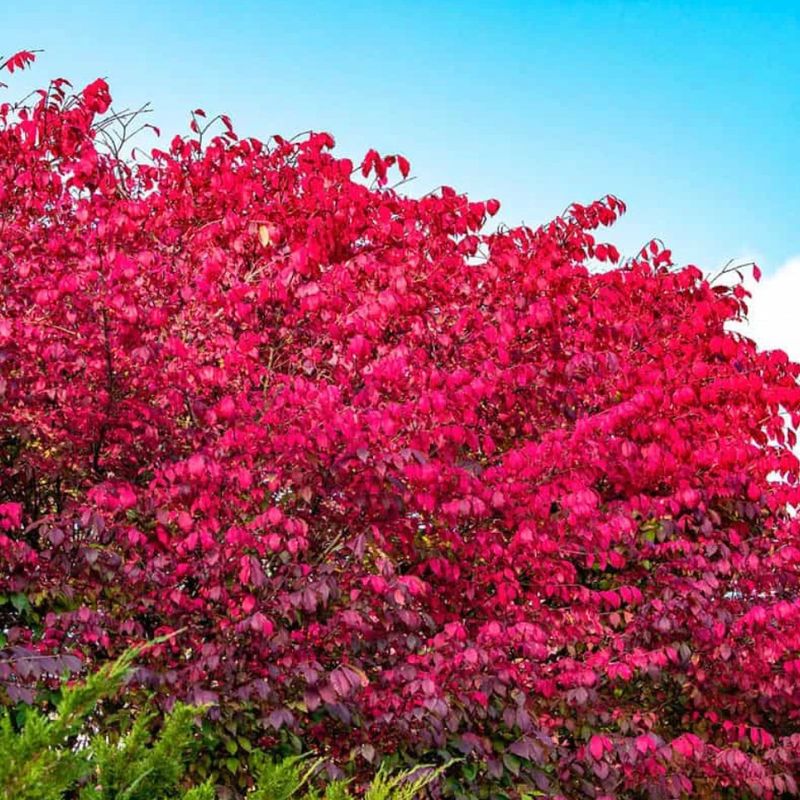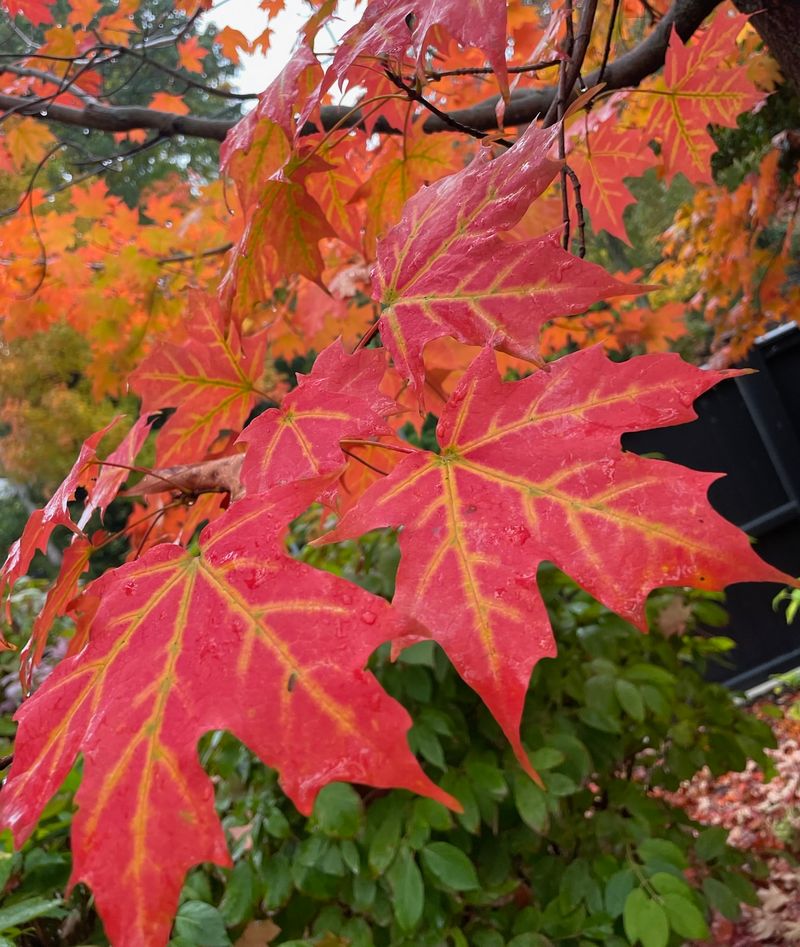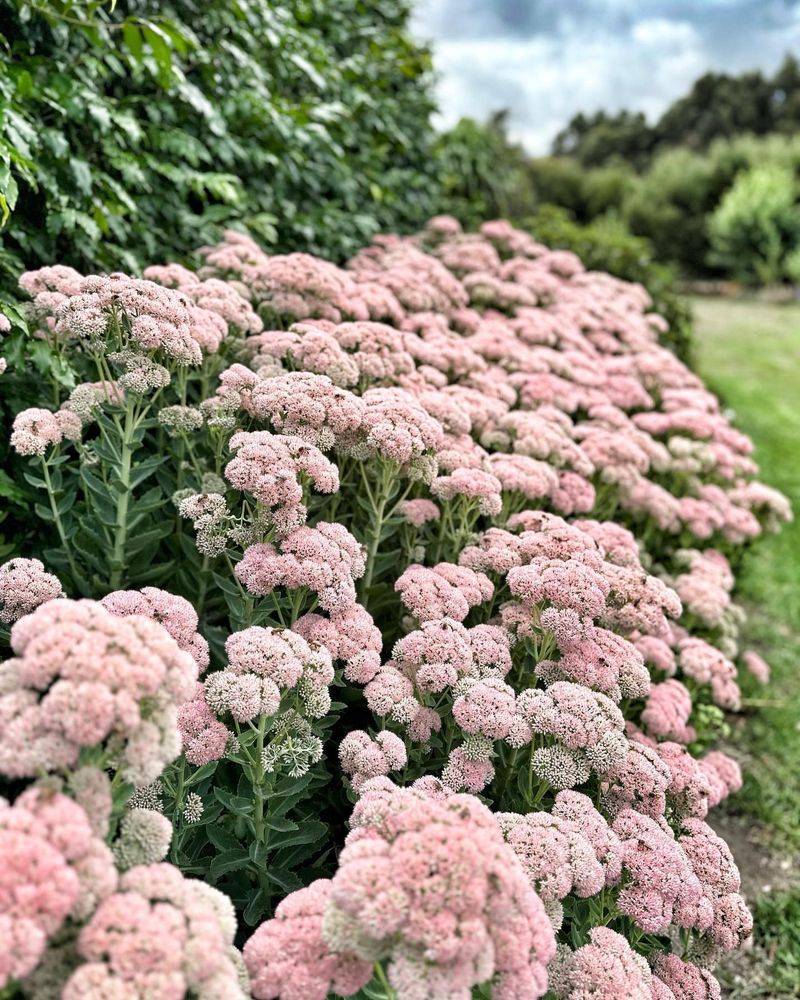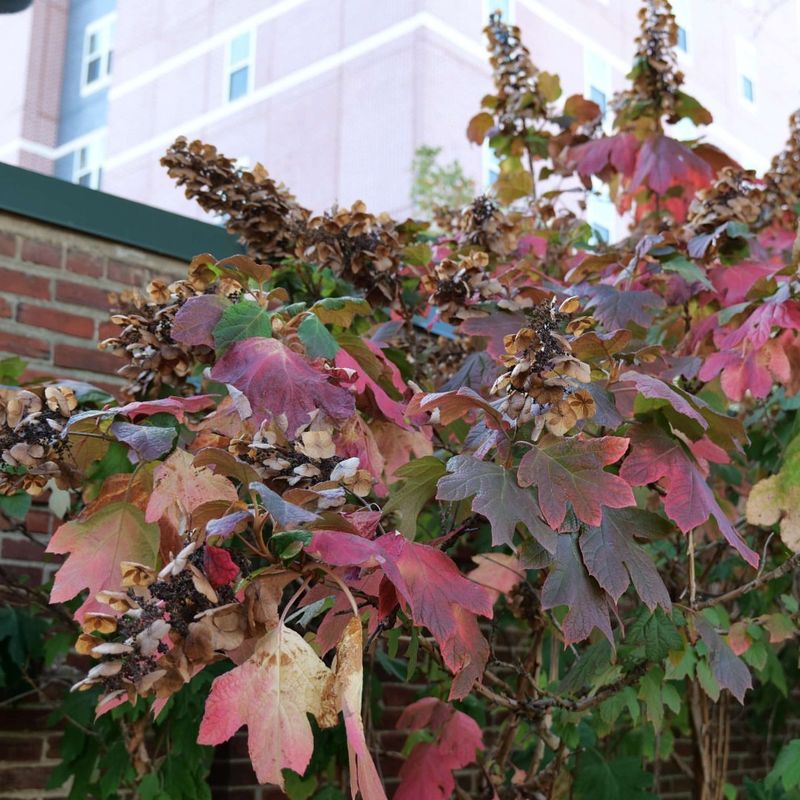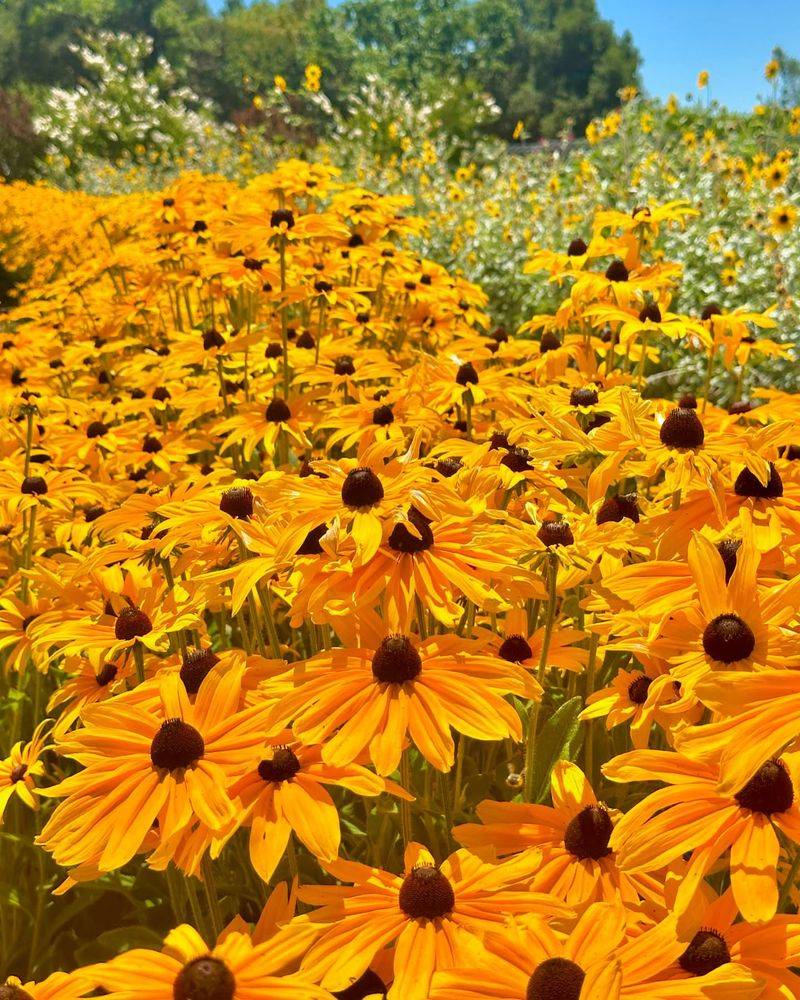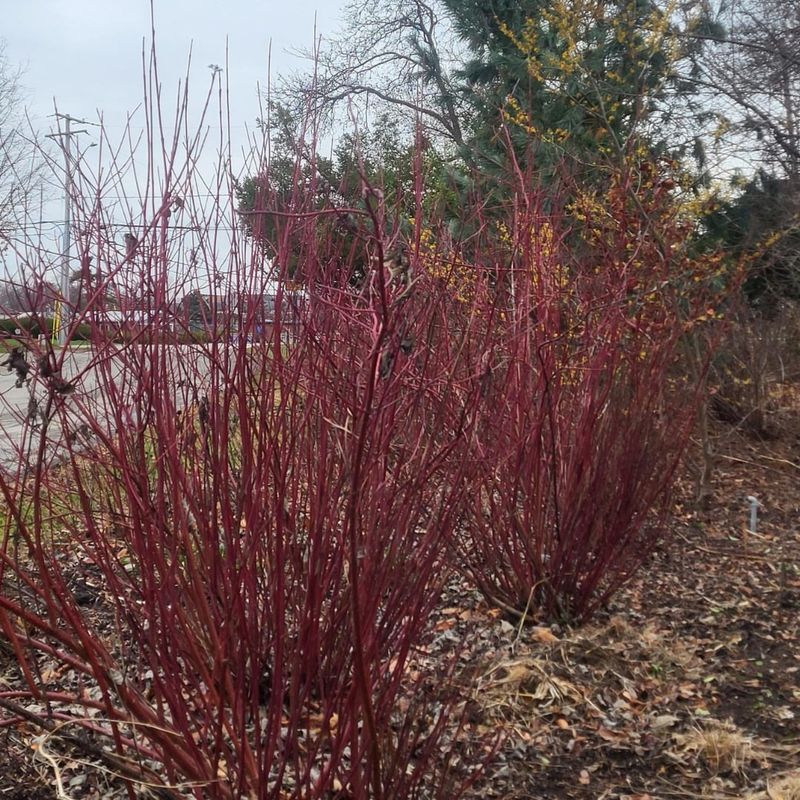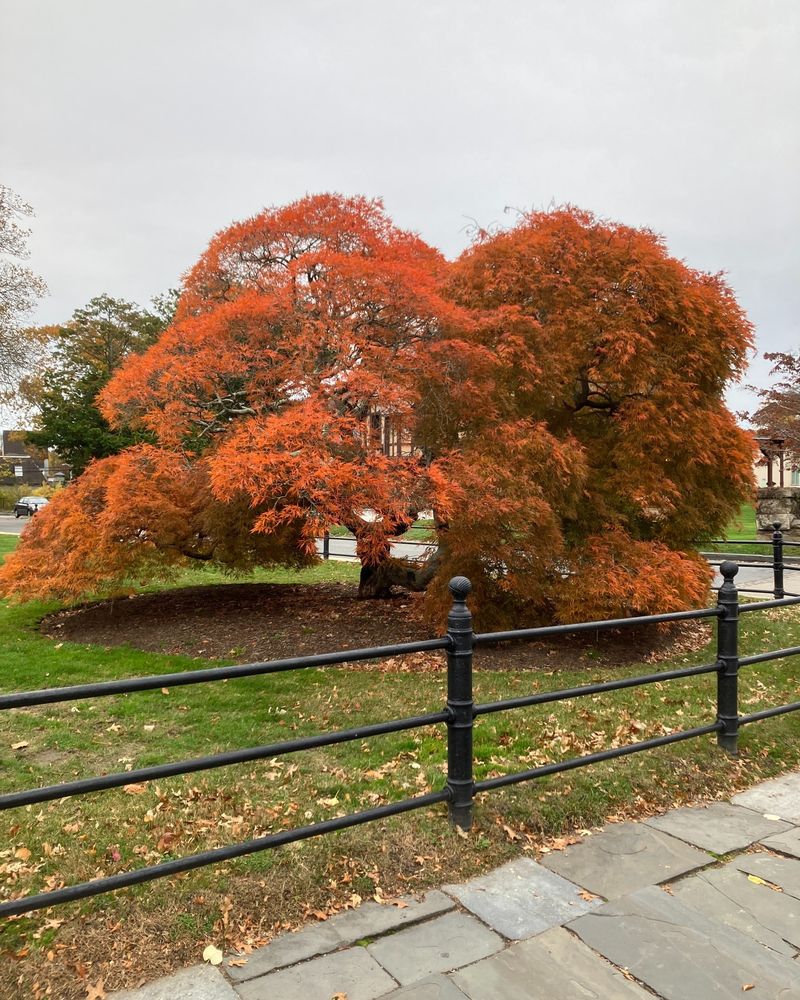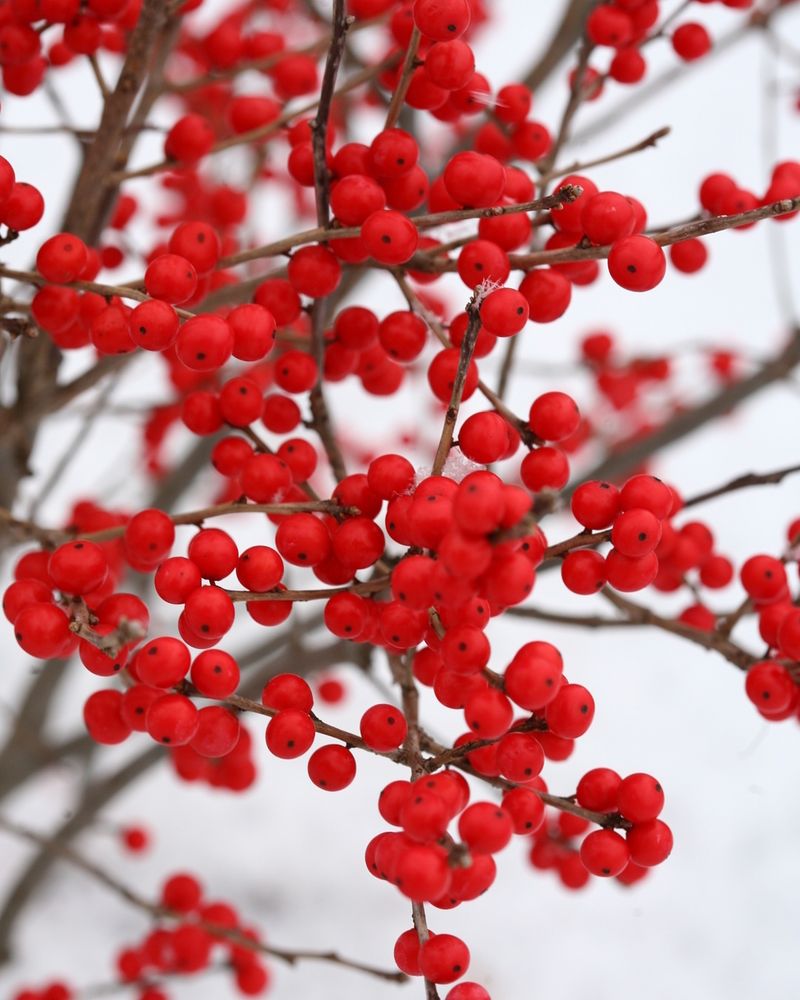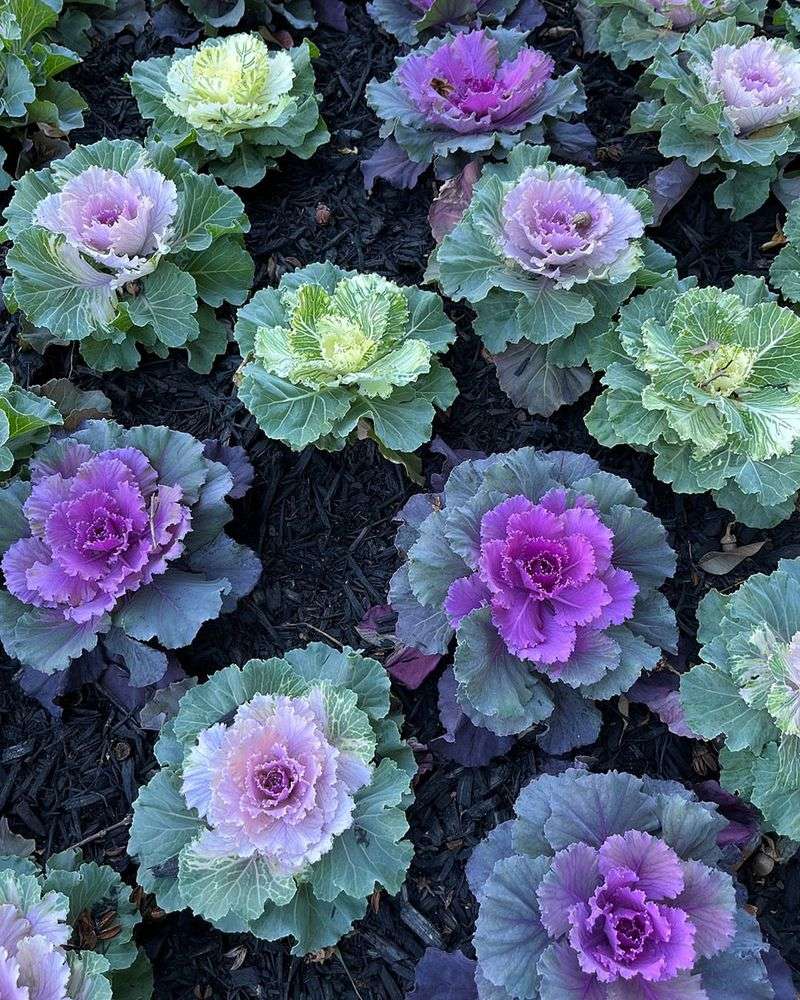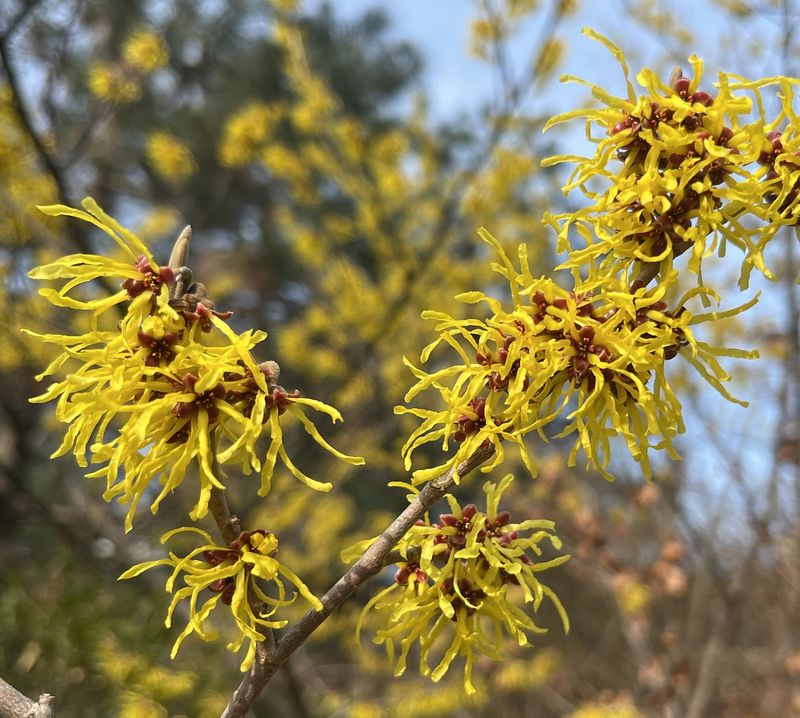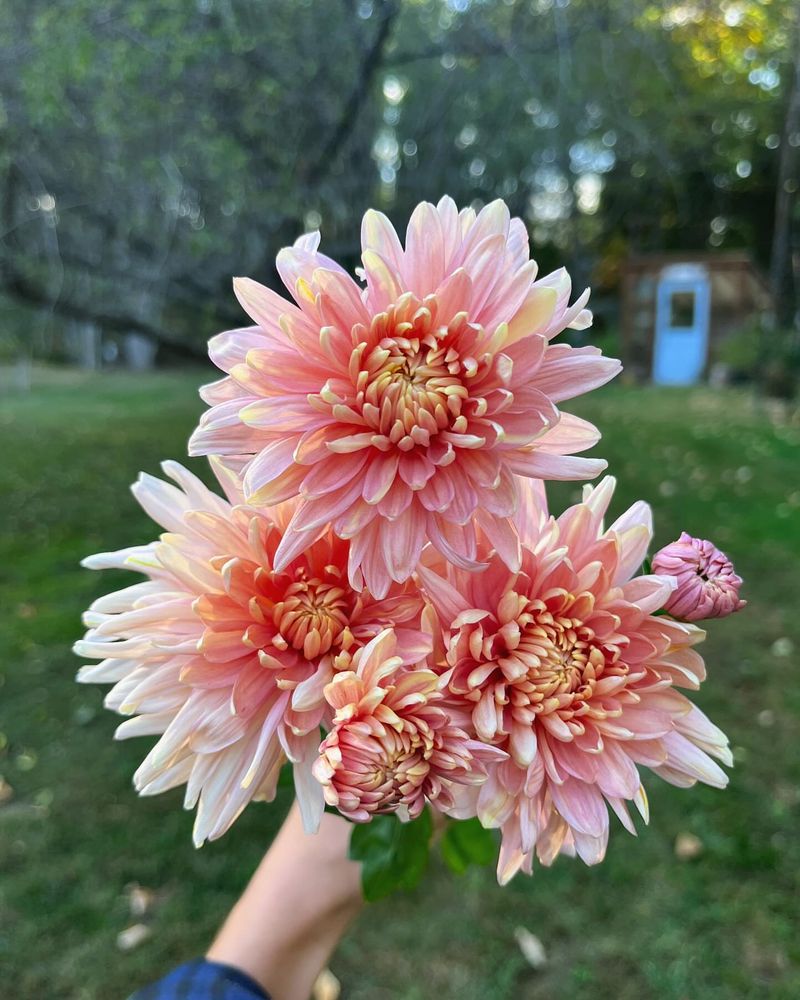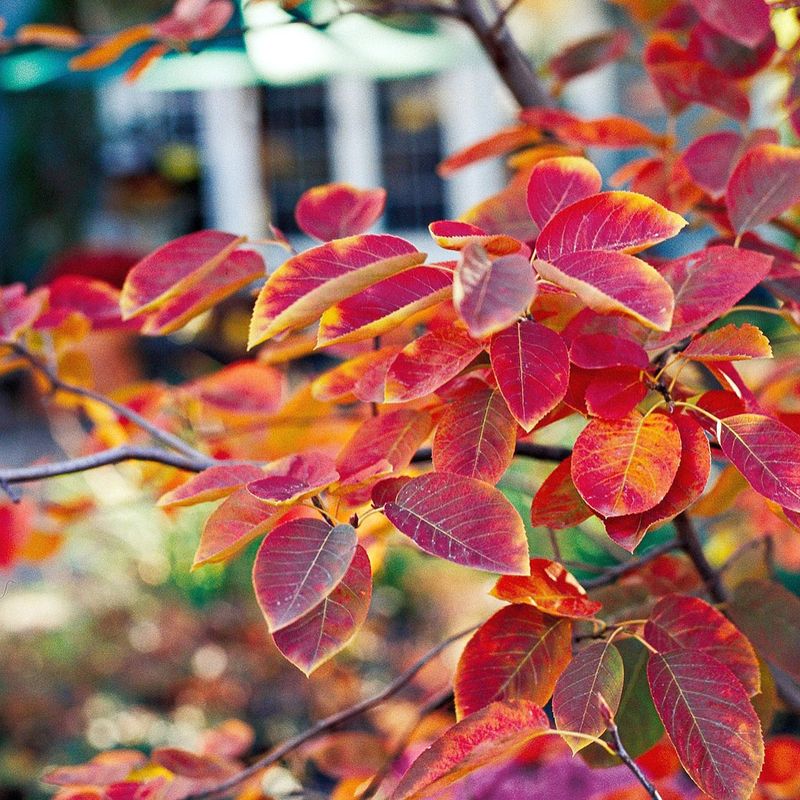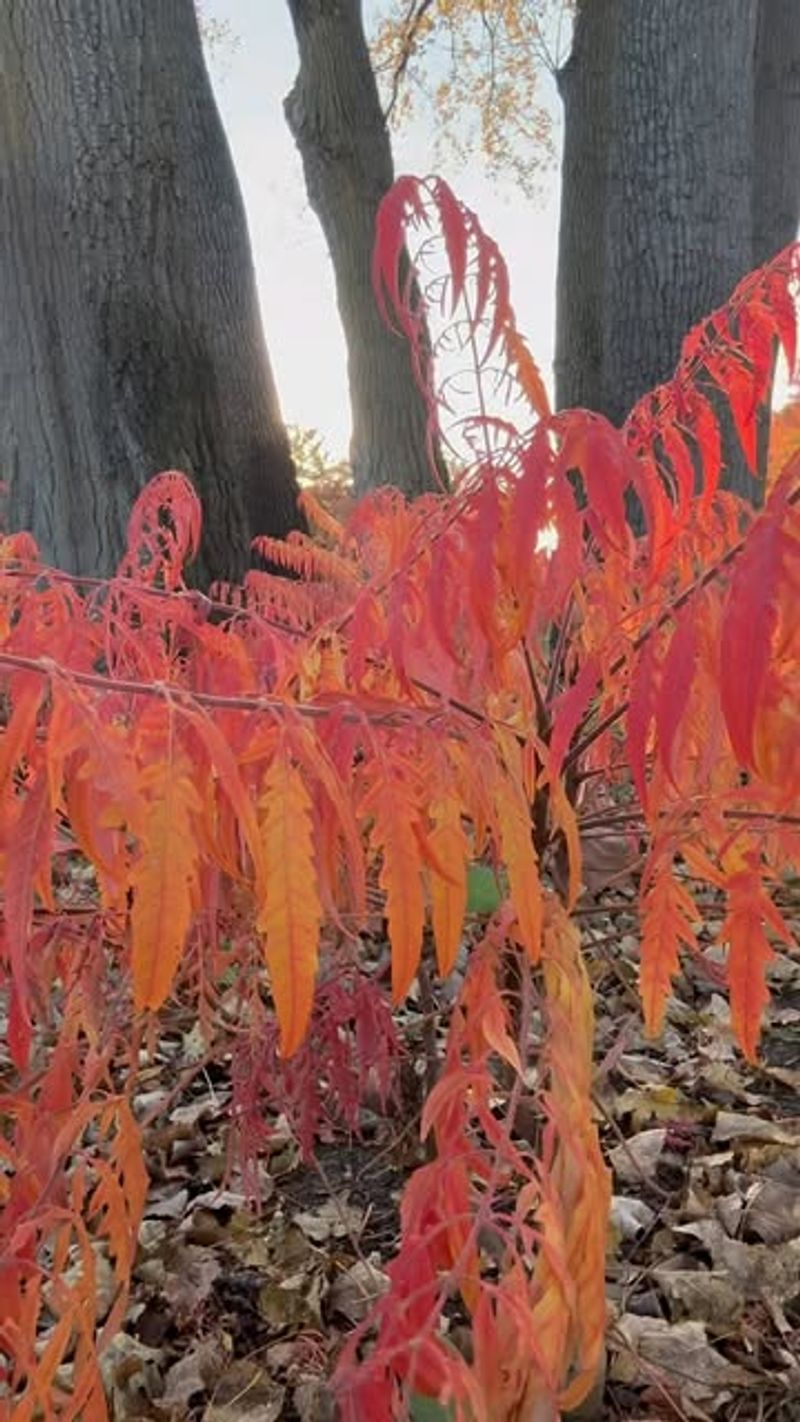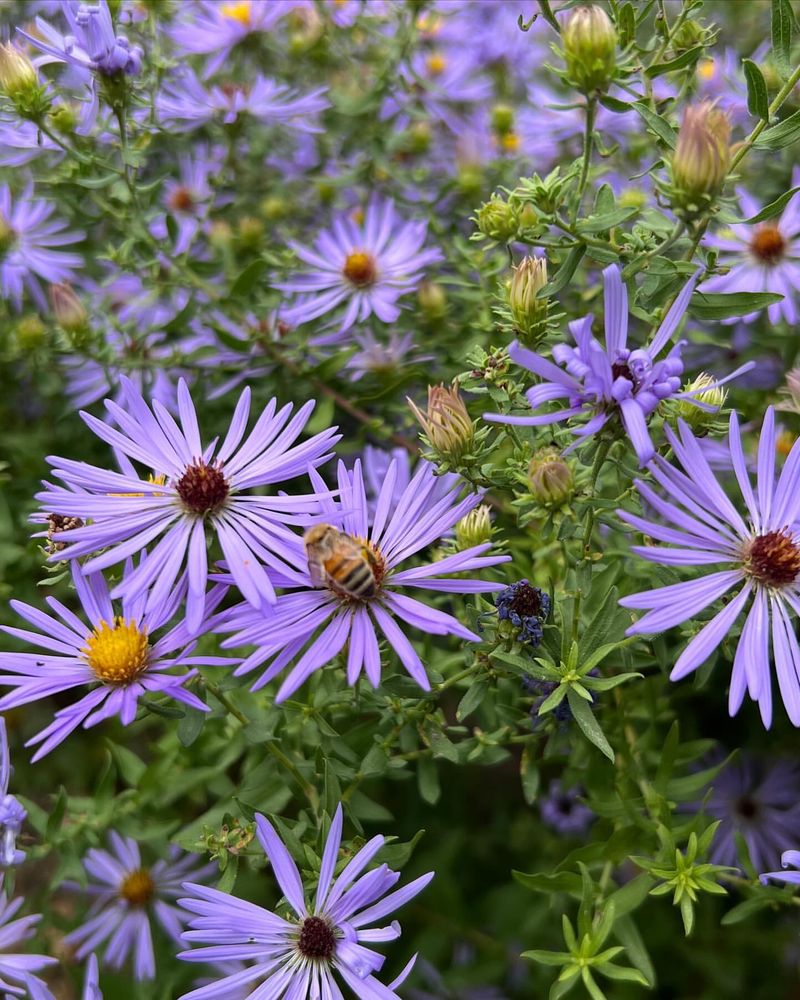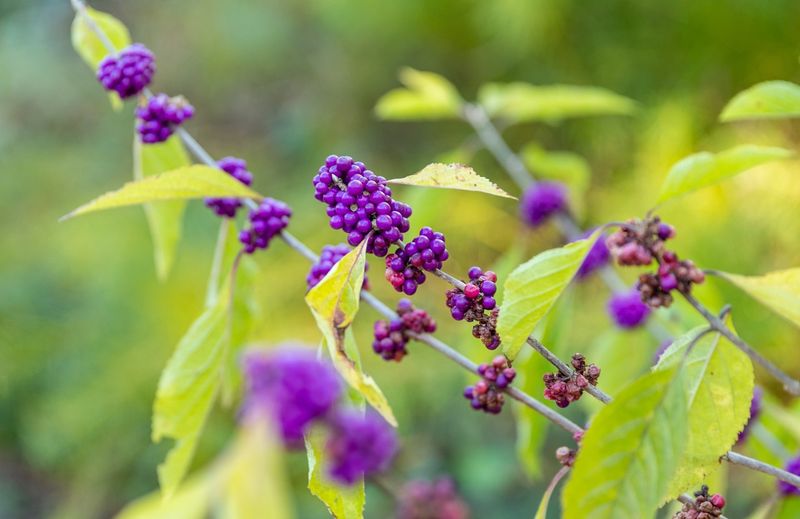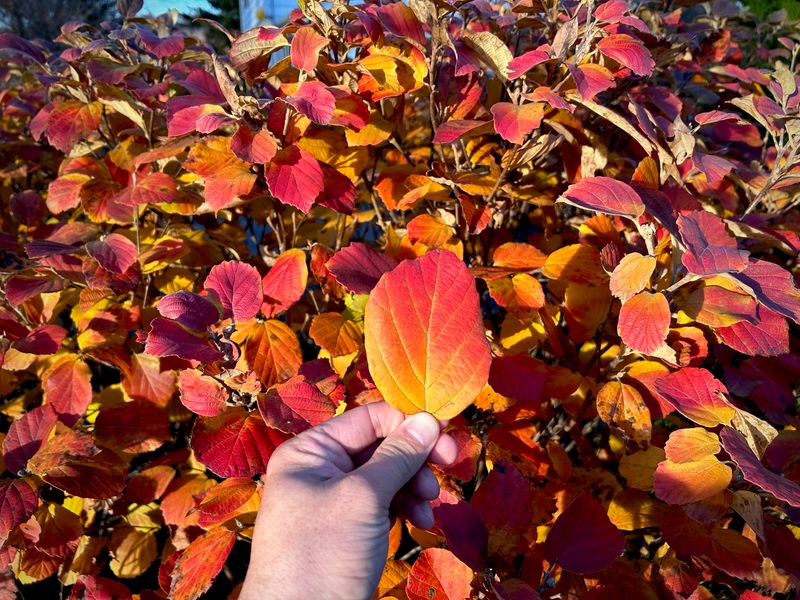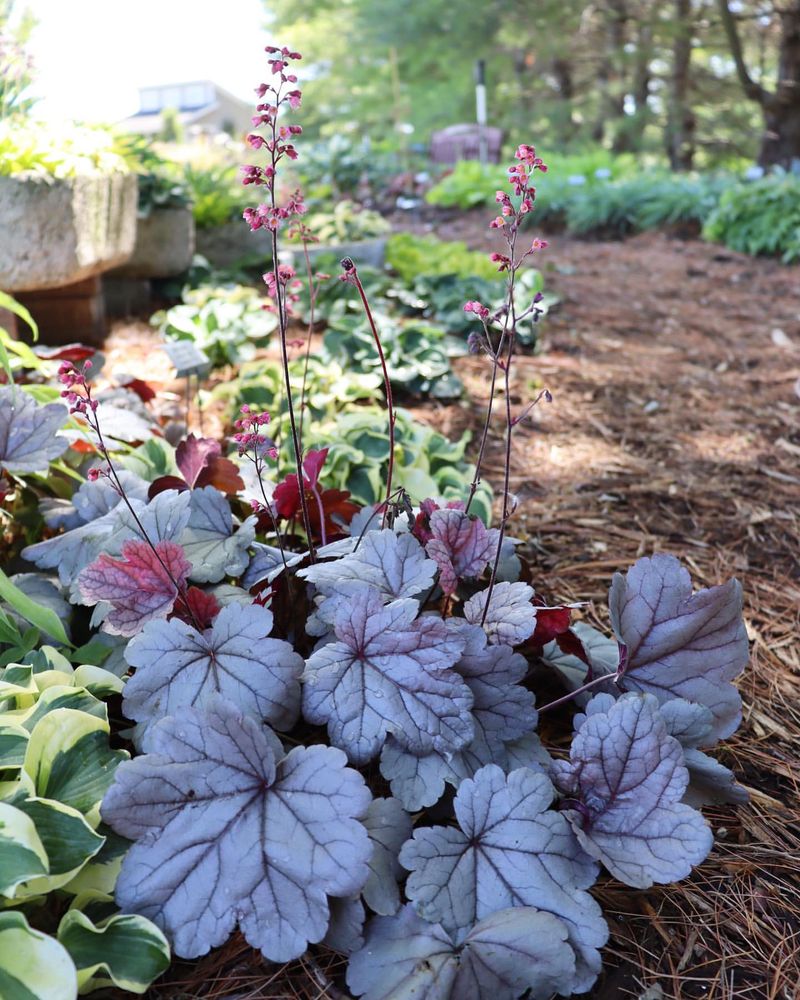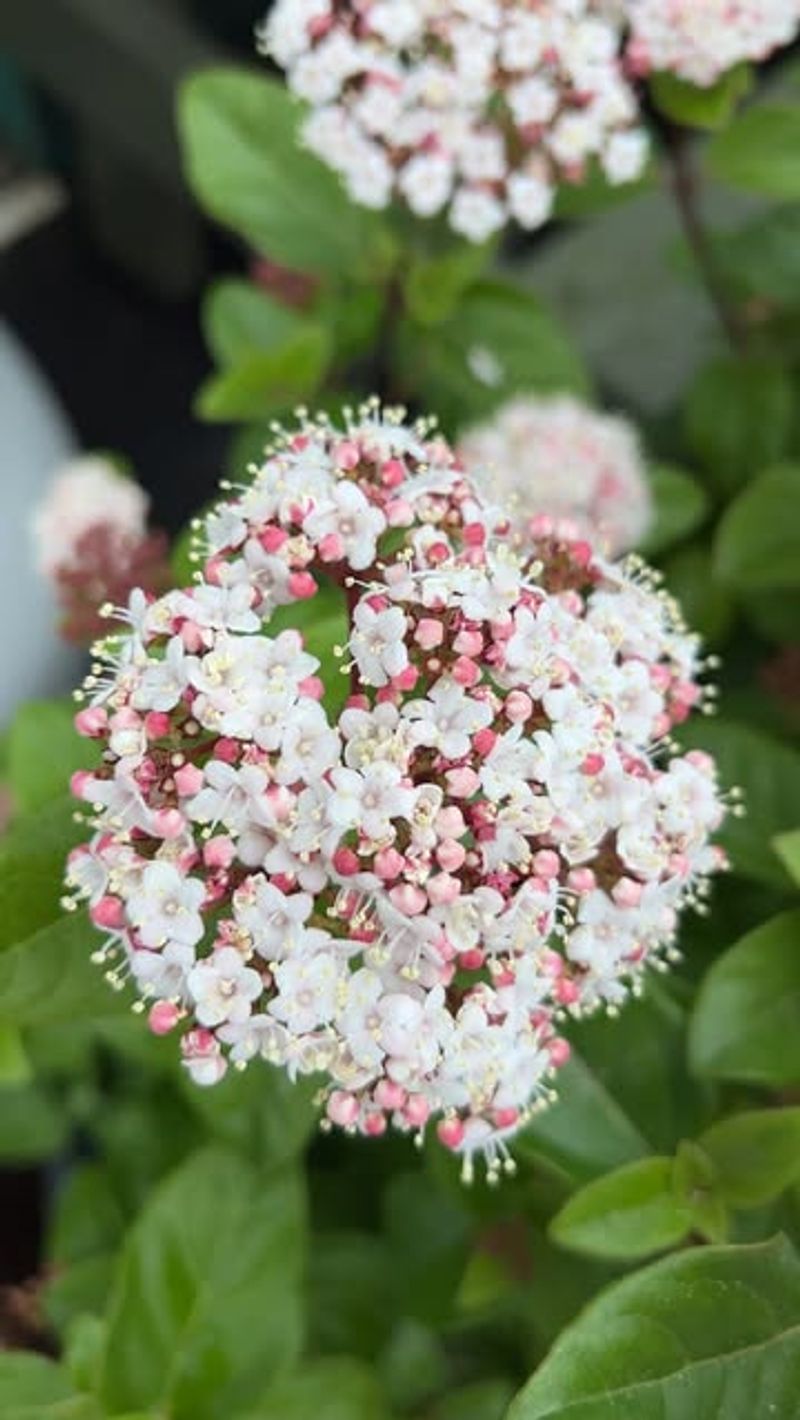Fall in Connecticut brings a stunning display of colors, and your yard can be part of this seasonal showcase. Adding the right plants now will reward you with vibrant autumn colors and boost your home’s curb appeal.
Transform your landscape into a fall wonderland with these perfect-for-Connecticut plants that thrive in our northeastern climate.
1. Burning Bush
The fiery red foliage of burning bush creates a spectacular autumn display that neighbors will envy. This hardy shrub requires minimal maintenance once established in your Connecticut garden. Plant in well-drained soil with full to partial sun exposure.
The brilliant crimson leaves hold their color for weeks, making this shrub a standout even as other plants fade. Reaching heights of 6-8 feet, it creates an impressive border or focal point.
2. Sugar Maple
Nothing says New England autumn like the sugar maple’s spectacular color show. The quintessential Connecticut tree transforms from summer green to a breathtaking blend of orange, yellow, and red come fall. Young trees establish well when planted in early fall.
They prefer moist, well-drained soil and full sun. Beyond seasonal beauty, sugar maples provide cooling shade in summer and the potential for maple syrup production as they mature – a true multi-season performer for your landscape.
3. Autumn Joy Sedum
Tough as nails yet softly beautiful, Autumn Joy sedum brings reliable color when many garden plants are fading. The succulent-like foliage stays attractive all growing season before the flower heads emerge.
Starting as pale pink clusters in late summer, the blossoms deepen to rich rusty red by fall. Drought-tolerant and deer-resistant, this perennial thrives in Connecticut’s variable climate with minimal fuss. Even after frost, the dried flower heads add winter interest and food for birds.
4. Oakleaf Hydrangea
Unlike its blue-flowering cousins, oakleaf hydrangea puts on a spectacular autumn show with leaves that turn deep burgundy-purple. The large, oak-shaped foliage creates dramatic texture in the landscape even before the color change begins.
White summer flower panicles gradually transform to pink, then rusty brown, persisting through winter. Native to North America, this hydrangea variety handles Connecticut’s cold winters with ease. Plant in morning sun with afternoon shade for best results in our New England climate.
5. Black-Eyed Susan
Sunny golden flowers continue blooming well into fall on these cheerful native perennials. Black-eyed Susans establish quickly when planted in early autumn, developing strong root systems before winter arrives.
Their daisy-like blooms attract butterflies and beneficial insects to your Connecticut garden. After flowering, the seed heads provide natural bird food through winter. Extremely hardy in our region, these drought-tolerant plants spread gradually to fill empty spaces with minimal care.
6. Red Twig Dogwood
Fall planting gives red twig dogwood shrubs time to establish strong roots before next year’s display. While the autumn leaf color shifts to purple-red, the real show begins after leaves drop. Brilliant red stems create stunning winter interest against Connecticut’s snowy backdrop.
Native to our region, these shrubs thrive in moist areas where other plants struggle. Plant several together for a dramatic winter focal point or use as a natural border along property lines.
7. Japanese Maple
Fall is the perfect time to add these elegant trees to your Connecticut landscape. Japanese maples create living sculpture with their delicate, lacy leaves and graceful branching patterns. Their autumn transformation brings intense crimson, orange, or purple colors that seem to glow in autumn light.
Choose dwarf varieties for smaller spaces or containers. Plant in locations sheltered from harsh winter winds, as Connecticut’s climate can challenge these somewhat delicate beauties in exposed sites.
8. Winterberry Holly
Connecticut’s native winterberry holly drops its leaves in fall to reveal branches loaded with brilliant red berries. Unlike evergreen hollies, this deciduous variety puts all its visual energy into fruit production. The berries persist through winter, creating striking color against snow.
Plant both male and female shrubs to ensure berry production. Winterberry tolerates our region’s wet soils and cold temperatures perfectly. Birds love the berries, making this plant a win for both curb appeal and wildlife support.
9. Ornamental Kale
For instant fall color that lasts until hard freeze, ornamental kale can’t be beat. The frilly, cabbage-like plants develop increasingly vibrant purple, pink, and white colors as temperatures drop in Connecticut autumn. Plant them now in containers or garden beds for immediate impact.
They actually improve in appearance after light frosts! Combine with mums and pansies for a classic fall display. Their tightly packed rosettes maintain perfect form even through early winter snows.
10. Witch Hazel
Our native witch hazel offers a unique late-fall surprise – fragrant yellow flowers that appear just as other plants are going dormant. The spidery blooms emerge alongside golden fall foliage for a double color display.
Fall-planted witch hazel establishes well in Connecticut’s climate, preparing for next year’s show. This understated shrub fits beautifully in woodland-edge landscapes typical of many Connecticut properties. The unusual flowering time makes it a special addition to any garden seeking four-season interest.
11. Chrysanthemums
Fall mums provide instant curb appeal with their dome-shaped blooms in autumn hues. For lasting garden impact, skip the flimsy supermarket varieties and invest in hardy garden mums from local Connecticut nurseries.
Plant them now in well-drained soil where they’ll receive at least 6 hours of sun. Pinch spent blooms to encourage more flowers. With proper care, these perennials will return year after year, unlike their short-lived decorative cousins. Choose colors that complement your home’s exterior for maximum visual impact.
12. Serviceberry
Multi-season interest makes serviceberry an outstanding addition to Connecticut landscapes. Fall brings brilliant orange-red foliage that stands out beautifully against our clear autumn skies. Native to our region, serviceberry trees thrive in Connecticut’s climate with minimal care once established.
Spring white flowers, summer berries beloved by birds, and attractive smooth gray bark provide year-round appeal. Their moderate size (15-25 feet) fits perfectly in smaller yards where larger trees wouldn’t work.
13. Sumac
The flamingly brilliant red of sumac foliage creates dramatic autumn focal points in Connecticut landscapes. Non-poisonous varieties like staghorn and fragrant sumac make excellent choices for naturalistic plantings. Their compound leaves turn fiery crimson early in fall and hold color for weeks.
Female plants produce fuzzy red fruit clusters that persist through winter. These native shrubs spread gradually through suckers, making them perfect for stabilizing slopes or creating informal hedges along property boundaries.
14. Asters
Late-blooming asters bring welcome purple, pink, or white flowers when most perennials have finished for the season. Connecticut’s native New England aster produces particularly abundant blooms that attract butterflies and pollinators. Fall planting allows roots to establish before winter dormancy.
These hardy perennials return reliably year after year, forming increasingly impressive clumps. Their daisy-like flowers pair beautifully with ornamental grasses and other fall bloomers. Drought-tolerant once established, they thrive in our region’s variable weather patterns.
15. Beautyberry
Few plants make a more surprising fall statement than beautyberry with its clusters of vibrant purple berries. The unexpected color stops visitors in their tracks when they spot this unique shrub in Connecticut gardens.
Yellow fall foliage provides contrast to the jewel-like fruit, which persists after leaf drop. Plant in groups for maximum visual impact. American beautyberry (Callicarpa americana) handles our winters better than Asian varieties. Birds eventually eat the berries, but not before you’ve enjoyed weeks of spectacular color.
16. Fothergilla
Honey-scented spring flowers are just the beginning of fothergilla’s charms. Come fall, this underused shrub erupts in a kaleidoscope of yellow, orange, and red – often all on the same leaf! The multi-colored effect creates a painterly look in Connecticut landscapes.
Compact varieties fit perfectly in smaller gardens or foundation plantings. Native to the eastern United States, fothergilla handles our region’s climate beautifully. Fall planting gives roots time to establish before next year’s display.
17. Coral Bells
Evergreen foliage in shades of purple, bronze, silver, or chartreuse makes coral bells valuable for Connecticut gardens year-round. Fall planting allows these perennials to establish strong roots while temperatures are moderate. Their colorful leaves form neat mounds that contrast beautifully with autumn flowers.
Many varieties develop enhanced color intensity as temperatures cool. Extremely hardy in our region, coral bells maintain their attractive appearance even through winter thaws and freezes, providing consistent structure in garden beds.
18. Viburnum
Fall-planted viburnums reward Connecticut gardeners with multi-season interest for years to come. Many species develop stunning burgundy-red autumn foliage before revealing colorful berries that persist into winter.
Blackhaw viburnum, a native species, performs particularly well in our climate. Spring brings fragrant white flower clusters, followed by summer berries that transition from green to pink to blue-black. Their adaptability to various soil conditions makes them perfect for challenging garden spots.

